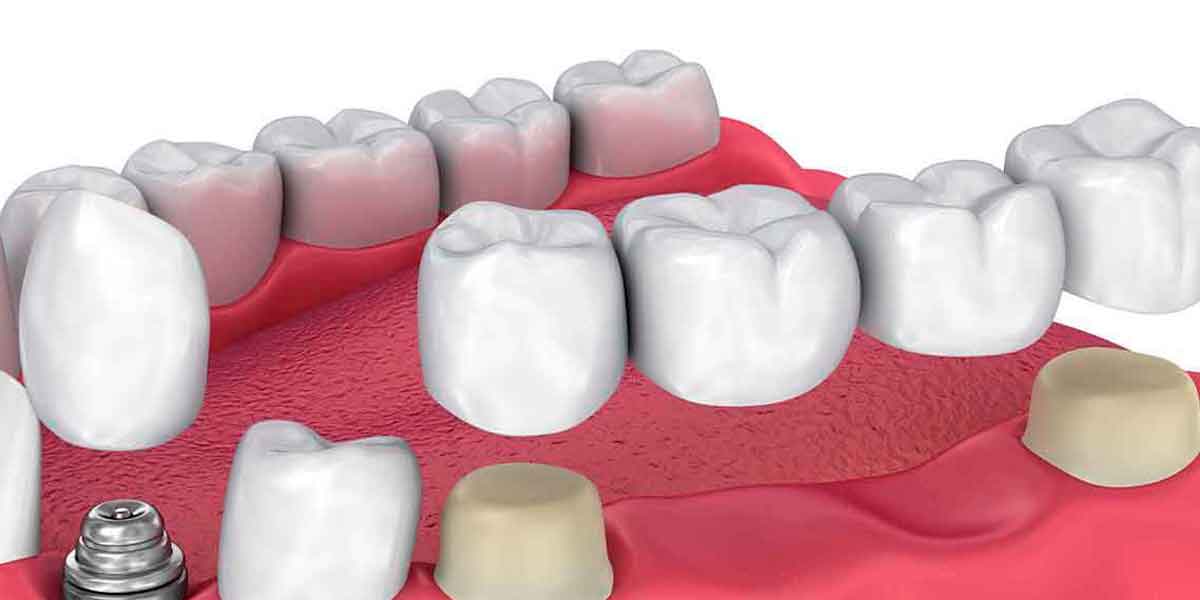Dental implants and bridges are two common options for individuals seeking to address missing teeth. While both treatments aim to restore functionality and aesthetics, they vary in terms of procedure, longevity, and overall benefits. This article will compare dental implants and bridges to assist in determining the most suitable treatment for individual dental needs.
Understanding Dental Implants
Dental implants serve as artificial tooth roots typically made from biocompatible materials like titanium. These implants are surgically inserted into the jawbone, where they gradually fuse with the bone, providing a stable foundation for a replacement tooth, bridge, or denture.
Procedure for Dental Implants
The process of obtaining dental implants involves several stages:
Initial Consultation: The dentist evaluates oral health and bone density to assess candidacy for implants.
Surgical Placement: The implant is surgically positioned into the jawbone under local anesthesia.
Osseointegration: Over a few months, the implant integrates with the jawbone, establishing a stable base.
Abutment Placement: An abutment is affixed to the implant, connecting it to the replacement tooth.
Final Restoration: A custom-made crown, bridge, or denture is attached to the abutment.
Benefits of Dental Implants
Durability and Longevity: With proper care, dental implants can last a lifetime.
Natural Appearance: Implants closely resemble natural teeth in both look and feel.
Preservation of Jawbone: Implants stimulate the jawbone, preventing bone loss.
No Impact on Adjacent Teeth: Implants do not require altering neighboring teeth.
Understanding Dental Bridges
Dental bridges are fixed prosthetic devices used to replace one or more missing teeth by anchoring to adjacent natural teeth or dental implants. Typically, a bridge consists of artificial teeth (pontics) held in place by crowns on neighboring teeth.
Procedure for Dental Bridges
The process of obtaining a dental bridge involves the following steps:
Initial Consultation: The dentist assesses oral health and determines the most suitable bridge type.
Tooth Preparation: Adjacent teeth are reshaped to accommodate the supporting crowns.
Impressions: Impressions of teeth are taken to create a custom bridge.
Temporary Bridge: A temporary bridge is placed while the permanent bridge is being fabricated.
Final Placement: The custom-made bridge is fitted, adjusted, and cemented into place.
Benefits of Dental Bridges
Quicker Process: Bridges typically require fewer appointments and less healing time compared to implants.
Effective Solution: Bridges effectively restore function and aesthetics.
Cost-Effective: Bridges are generally less expensive than implants initially.
Non-Surgical Option: Bridges do not involve surgery, making them suitable for patients unable to undergo implant surgery.
Comparing Dental Implants and Bridges
Both dental implants and bridges have their advantages and limitations. Key factors to consider when choosing between the two include:
Durability and Longevity: Implants are known for their long-lasting nature, while bridges may require replacement every 10 to 15 years.
Aesthetics and Functionality: Implants often offer superior aesthetics and functionality compared to bridges.
Impact on Adjacent Teeth: Implants do not affect neighboring teeth, unlike bridges that require reshaping.
Bone Preservation: Implants help preserve the jawbone, while bridges do not provide this benefit.
Cost Considerations: While implants are initially more expensive, their longevity may make them more cost-effective in the long run.
Surgical vs. Non-Surgical: Implants require surgery, whereas bridges are a non-surgical option.
Which Option Is Right for You?
Choosing between dental implants and bridges depends on various factors, including oral health, budget, and personal preferences. Consulting with a qualified dentist is essential to determine the best option for individual needs.
Factors to Consider
Oral Health: Evaluate the condition of teeth, gums, and jawbone.
Budget: Consider both initial and long-term costs.
Medical History: Discuss any medical conditions that may impact surgery.
Aesthetic Goals: Determine which option aligns with desired aesthetic results.
Long-Term Goals: Consider maintenance requirements and longevity of each option.
Consultation with Your Dentist
Your dentist will assess oral health, discuss goals, and provide personalized recommendations based on individual needs, aiding in making an informed decision.
Conclusion
Both dental implants and bridges offer effective solutions for replacing missing teeth, each with unique advantages and considerations. Dental implants provide a long-lasting, natural-looking,




